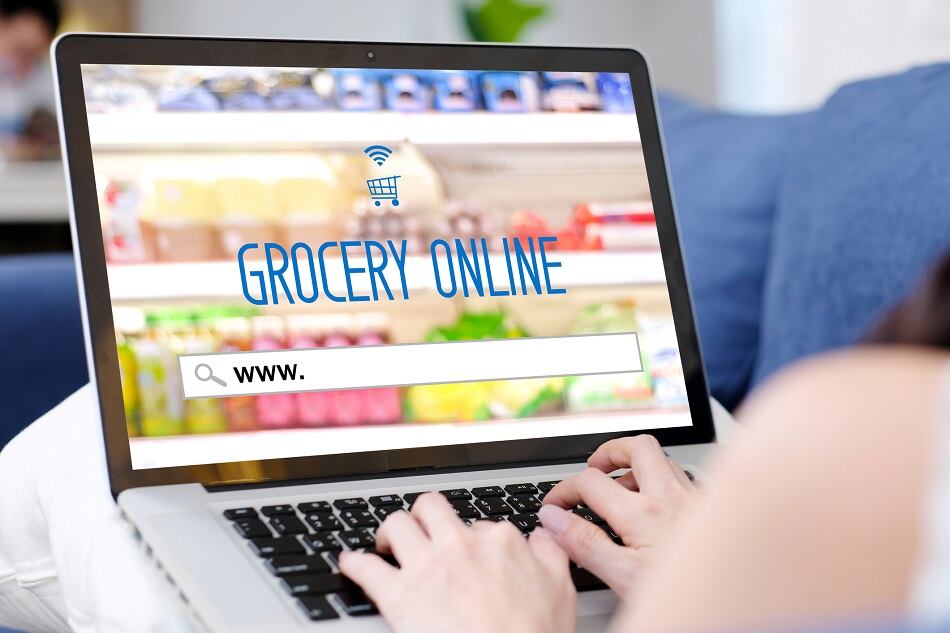“Some pundits out there think that the coronavirus simply pushed the online grocery trend ahead … by about five years. But, I disagree,” Mike Spindler, CEO of FultonFishMarket.com, told attendees at the virtual Digital Food & Beverage conference this week.
Yes, he agreed, fear of exposure to coronavirus caused a seismic shift in grocery shopping patterns as illustrated by Bricks Meets Clicks finding of a 5.5 fold increase in online grocery sales from August 2019 to May 2020 and a 3.3 fold increase in households grocery shopping online to 43 million during the same period.
But, he explained, that the “fundamental break with the prior environment” and how people shopped pre-COVID-19 is not as simple as a direct shift to online versions of the brick and mortar stores they previously frequented. Rather, he said, the pandemic jumpstarted a move away from retailers to direct-to-consumer delivery by brands and specialty aggregators that will continue to accelerate in coming years.
He attributed this change, in part to the pandemic triggering “a complete redefinition of convenience by significant swaths of consumers” to which direct-to-consumer providers and online specialty product aggregators have adapted more quickly than traditional grocery online grocery retailers.
For support, Spindler pointed to a surge in sales at FultonFishMarket.com that was nine times higher in the third week of May as in the first week of March before the pandemic hit.
“So, in a very short period of time, huge increases in the number of orders, despite the fact that we applied breaks to the growth engine to try and not disappoint customers” by being unable to fill their orders, he said.
A new definition of convenience
Spindler argues the shift to online grocery – both to retailers and DTC providers – may ebb slightly once states begin to reopen and stay-at-home orders lift, but he says the convenience of ecommerce will win over a significant portion of consumers who will not return to in-store shopping at the same rate as before COVID-19.
He explained that before the pandemic, many consumers defined convenience in a way that favored in-store shopping. Sure, ordering online saved time despite difficult to navigate grocery websites, but circa 2012 convenience tipped most in favor of in-store where consumers knew they could shop without extra fees, control substitutes for out-of-stocks, select their own produce and take care of the chore out of habit. At this time, only a few specialty providers offered DTC, making this option more cumbersome and reducing the reward.
At the start of the pandemic, the value of convenience had shifted somewhat so that consumers found online and in store shopping equally easy and frustrating for different reasons. Now online shopping offered time savings, protection against exposure to coronavirus, trust that the claims made by products, and especially DTC purveyors, were accurate. The downside was difficulty scheduling delivery and not knowing what items would actually be delivered.
At this time, in store still had many of the same benefits – no fees, the ability to make substitutions for out-of-stocks and the freedom to go when consumers wanted. But many of these benefits suffered because of supply chain problems that meant consumers had just as disappointing a shopping experience in store as online, Spindler said.
In the early days of the pandemic, this frustration and disappointed equally impacted both in-store and online, acknowledged Spindler, but he said that direct-to-consumer purveyors were able to more quickly address common challenges, including more accurately reflecting inventory and more consistently delivering on quality promises.
At the same time, more brands, farmers, ranchers and others are propping up DTC ecommerce options -- improving convenience, consumer familiarity with the channel and reducing the need for shoppers to go through a ‘middle man’ or retailer.
Trust is the most important currency for DTC
But in order for these new DTC ventures to succeed long-term, Spindler said purveyors must deliver on their promises to build trust.
“Out of all the components [related to the new definition of convenience]: risk, trust, and time or value – the only one that really counts is trust. Are we a trusted supplier of the product that you offer?” he said.
To be that, he said, DTC purveyors must deliver “on every element of trust, including product integrity – is the product really grass fed if I say it is grass fed? – sourcing resiliency – am I able to supply product even though supermarkets have not been able to? – quality of the product, including side operations and security, and delivery resiliency,” he said.
He added that DTC providers also will need to “own their message,” whether it is better-for-you or indulgence or something else.
“If you tell people in the direct-to-consumer business that you have certain characteristics in your marketing position, and they find out later that they don’t, then people bail on you and you won’t have a business. You business not only will be x-ed off the list, but people will never come back and they will talk about you to other consumers,” he warned.
“So,” he concluded, “if you are going to go to DTC, and it seems to be the end repository of a great deal of business, then the most important of the convenience attributes is that consumers trust that you are going to deliver on your marketing message.”




